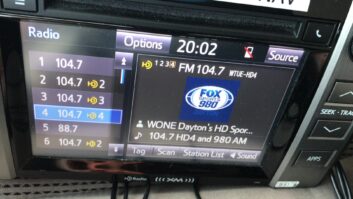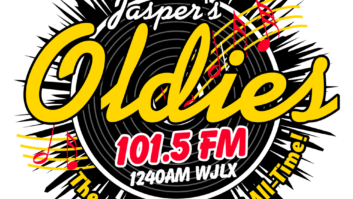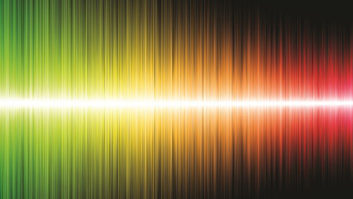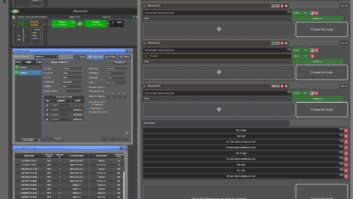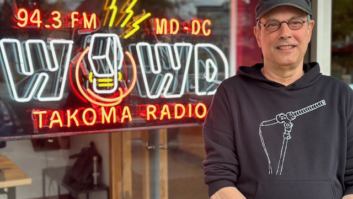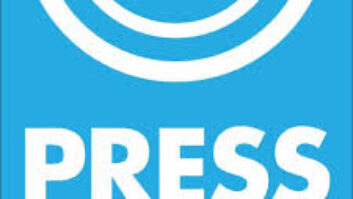The interference fallout of full-time AM HD operations has been scattered and largely anecdotal. According to reports in RW, only one formal complaint has been filed as of this writing. By the time you read this, there likely will be others.
The AM HD rollout has attracted only about 225 licensed stations, mainly the wide-area coverage powerhouses and stations that also bought in early to the promise of 15 kHz stereo. About 175 are operational daytime while less than 70 are thought to be operating at night. That’s less than 2 percent of the total inventory of U.S. AM stations.
Citadel/ABC has kept its AM HD flamethrowers like WABC, WJR and WBAP analog only at night while Cox is still choosing to keep all its AM stations’ IBOC exciters turned off full-time. Clear Channel and CBS still have the majority of their AM stations unequipped for HD.
Many think the handwriting is on the wall and AM HD is in deep trouble.
SOMETHING’S FISHY
This rollout has been like watching a small group of particularly aggressive salmon swimming in a crowded and polluted river upstream against tall odds and rocky rapids. The AM band with all of its overlapping adjacent-channel allocations and skywave issues was not going to allow an easy transition to digital.
Squeezing digital modulation into an AM channel to give the service 15 kHz stereo would prove to be incredibly challenging. In a sense, the IBOC engineers who invented AM IBOC were virtually “forced” to make it work. Serious compromises had to be made and secondary coverage had to be sacrificed. Ibiquity no doubt underestimated the importance of most stations wanting to maintain their existing analog service areas.
Quite a few small-market AM owners are convinced that NAB and Ibiquity conspired with the FCC to hasten their demise with the adoption of AM HD. They reason that only the big boys will be able to afford acquiring the licensing, equipment and antenna system improvements — not to mention their willingness to lose big chunks of important secondary coverage.
If implementing IBOC for radio broadcasting really was a conspiracy, the prime movers didn’t plan it very well. The industry clearly wanted a new digital transmission solution to keep both AM and FM competitive with other media. The positive enhancements of AM HD are available to any station. Many of its negatives unfortunately affect all stations on the band, whether they adopt it or not.
The introduction of a new technology and standard will always inflict pain and suffering of various forms during the transition. I see this as coincidental and the result of unintended consequences more than a veiled attempt to put small stations out of business. The truth is many small AMs were teetering on failure long before AM IBOC arrived on the scene.
As RW commented in a recent editorial, even a number of major-market stations that have deployed AM HD are feeling the pinch of reduced coverage at night. Those with strong adjacent-channel neighbors have had their effective nighttime interference-free (NIF) contour values increase by double or even triple.
Listeners who could previously hear the station without interference out to the 5 mV/m contour, for example, would now experience much more interference at that distance and have to move closer to the 10 or even 15 mV/m contour before the additional interference caused by IBOC noise becomes unnoticeable.
Owners like Clear Channel and CBS have to choose which AM HD stations to leave on at night and which ones they’ll leave off or perhaps even turn off due to interference inflicted on more important co-owned stations.
Time will tell if the commission dares to step in and do anything about the problem beyond arbitrating existing protected analog contour disputes. You can bet it will let the new standard prevail unless the NAB or a coalition of broadcasters forces the issue.
By establishing the AM IBOC standard in the rules, the FCC has chosen to ignore the de facto increases that IBOC operations on first-adjacent channels inflict on nighttime interference free contours. It probably did that unwittingly under pressure from the industry to allow fulltime AM IBOC to commence.
WYSL VS. WBZ
Bob Savage, owner and operator of WYSL(AM) 1040 near Rochester, N.Y., filed a formal complaint in late October with the commission and WBZ(AM) 1030 regarding lost protected nighttime, critical hours and even daytime service in the Rochester suburbs.
According to Savage, the strong IBOC hash from WBZ on 1040 during most nights hammers a good bit of WYSL’s coverage area inside its normally predicted NIF contour of 13.7 mV/m. And he’s made a lot of off-air digital recordings to prove it.
The real WYSL NIF contour is now 28.2 mV/m with WBZ running AM HD full time. That figure is supplied by Barry McLarnon, a well-known broadcast consultant and self-proclaimed AM IBOC naysayer based in Toronto. McLarnon has been beating a drum that too many in this industry are underestimating the real effects of AM IBOC interference to first-adjacent channel stations.
One of the nasty realities many overlook in the AM IBOC controversy is the presence of substantial daytime (and especially critical hours) skywave that drops in on top of first-adjacent stations from high-powered neighbors. It is painfully obvious in the crowded north central and northeast sections of the country and in the upper half of the AM band.
In a Radio World guest commentary, McLarnon lays out the basis of how and why AM IBOC digital sideband signals contribute significantly more interference to their first-adjacent neighbors than simple compliance with the NRSC mask would suggest (“McLarnon: Enough Is Enough,” Dec. 5). If you keep an open mind and carefully evaluate the number-crunching, he makes a rather compelling case. McLarnon is helping Savage pursue and defend his FCC complaint.
(click thumbnail)Bob Savage is so upset about the entire IBOC proceeding that he and a few friends have set up a Web site called www.stopiboc.com. Watt Hairston, chief engineer for WSM(AM) in Nashville, and Jerry Arnold, director of engineering for Midwest Communications in Terre Haute, Ind., have joined Savage in creating what they call an “Anti-IBOC Alliance.” The site invites sympathizers to sign up and become members.
So far, this battle looks like a David-and-Goliath encounter, but the real contest we all saw coming is just beginning to heat up. The outcome is anything but certain with the AM HD rollout now effectively slowed to a crawl by issues that will not be easily resolved with any quick fix.
FINDING A WAY OUT
There are a number of ways this impasse could end sooner rather than later.
As more stations go on at night and more interference complaints are received, the FCC could be forced to agree with McLarnon and decide the interference issues are serious enough to warrant rescinding nighttime HD authority. Rendering AM HD a permanent daytime-only enhancement could be its undoing. The pressure could come from affected U.S. stations but also from Canada or Mexico.
Either country could choose to challenge the FCC to enforce the spirit and letter of the international agreements struck more than 65 years ago that protect allocated AM station coverage contours beyond the borders.
But with many Canadian AM stations going dark by choice over the past 20 years, the CRTC (the Canadian FCC) has signaled that AM is not a major concern or priority. It is possible, however, that it may be waiting for enough U.S. AM IBOC stations to fire up at night before pursing a formal complaint that will need the backing of substantial evidence.
A less likely scenario would have NAB and major group owners pressure Ibiquity to forge a modified digital modulation scheme that produces less adjacent-channel interference. That would certainly seem to serve the long-term interests of AM stakeholders better.
Ibiquity would not be happy about resurrecting an R&D effort to find a better AM IBOC solution. Quite a few respected engineers in this industry have suggested that DRM offers important improvements over AM HD.
There just might be a technology breakthrough that could allow an even better method to encode higher-quality digital modulation with less destructive interference. We’ll never know unless a new round of research and testing gets financial backing and proceeds. Time is not on our side on this one.
The majority of major broadcast companies who also are Ibiquity investors have essentially forfeited their interest in protecting secondary coverage in exchange for 15 kHz digital stereo. Plus, the AM band may have already declined enough in overall importance that none of the major players have the appetite to pursue such a fight.
WHERE TO FROM HERE?
What’s likely to happen going forward?
The actions of Citadel and Cox give us a clue for the short term. Rather than risk causing increased interference to their own analog reception on some receiver models and tolerating reduced nighttime coverage from other stations (often co-owned), other owners will selectively turn HD transmissions off.
Stations that have been thinking about making the considerable investment to add HD will not likely do so unless the doubts about AM HD are somehow sufficiently resolved. We don’t see that happening or a growth spurt in AM HD occurring anytime soon.
The pioneering AM HD stations like WOR and WBZ and others already operating who have decided HD helps more than hurts will leave it on — until and unless they receive enough legitimate interference complaints that force them to reduce IBOC power on one or both sidebands. If that happens to enough key stations, AM HD may not survive, even as a daytime-only enhancement.
On the other hand, FM HD delivers many more benefits without the interference penalties, so the HD rollout should continue to grow. Especially if Ibiquity makes it easier for car companies to include stock OEM HD radios in new models, and the FCC allows the anticipated 10 dB increase in FM HD digital power.
RADIO DARWINISM
The AM HD stations that can maintain full-time full-power HD operations and successfully fend off interference complaints will establish permanent footholds at their dial positions. There’s little chance the FCC would ever rescind HD authority for them. In many cases, rim-shooters affected by those stations that can no longer effectively cover their intended but unprotected service areas may have to throw in the towel.
With or without IBOC, as more of AM radio’s audience shifts to other media choices, the band will continue to deteriorate and more of the marginal stations will go dark. Over time, attrition could whittle down the AM inventory to a less cluttered bandscape, allowing stations with good full-time coverage to eventually reconsider the advantages of AM IBOC and try deploying it.
The FM HD deployment will eventually put AM HD-capable radios into the hands of millions. At that point, converting to HD on AM will have an immediate benefit for most stations. But if the band doesn’t remain viable long enough to get there, it may expire out of lack of interest and internal squabbling.
FOOD FOR THOUGHT
In previous columns, I’ve suggested the easiest way out of this conundrum is to merely dispense with the AM hybrid mode and postpone AM IBOC until HD receiver penetration hits critical mass for FM HD.
That would appear to be at least 15 years down the road, so it should be easier for the AM stations still remaining to switch off analog forever at the same time and commence transmitting the full digital mode.
I’ve also talked about various ways the FCC could encourage the process of cleaning up the AM band to occur more quickly. Those ideas include giving existing AM stations the choice of trading in their AM channel for an LPFM assignment; granting them tax certificates for retiring an AM license; allowing stronger stations to more easily buy off weaker ones; and the imposition of a freeze on all new AM station applications and elimination of an allocation once it went dark.
The end goal would be to allow the band to become cleansed and healed so that at least the stronger members might survive. I got hammered by various laissez-faire broadcasters for even suggesting such “heresy.”
Don’t forget that Mother Nature has more brutal methods to make this happen. Be it famine, flood, pandemic, forest fire or just the natural life and death cycle for anything that grows, survival of the fittest is a powerful imperative.
The hard truth is that our AM band is a very overcrowded noisy neighborhood with many residents encroaching over bordering property lines. Hindsight tells us the old zoning laws have not been adequate or appropriate. IBOC is just making a bigger mess out of an already marginal situation.
The medium-wave spectrum AM uses is a perpetually available resource. There are more than 500 million radios that can receive AM signals out there in the hands of U.S. consumers. Unless some external event permanently alters the earth’s magnetic field and atmosphere, the ability to propagate MW signals for the purpose of serving mankind is not going away.
Like cleaning up polluted rivers and clearing forest underbrush, we just need to manage this resource smarter than the record of recent history has exposed.






